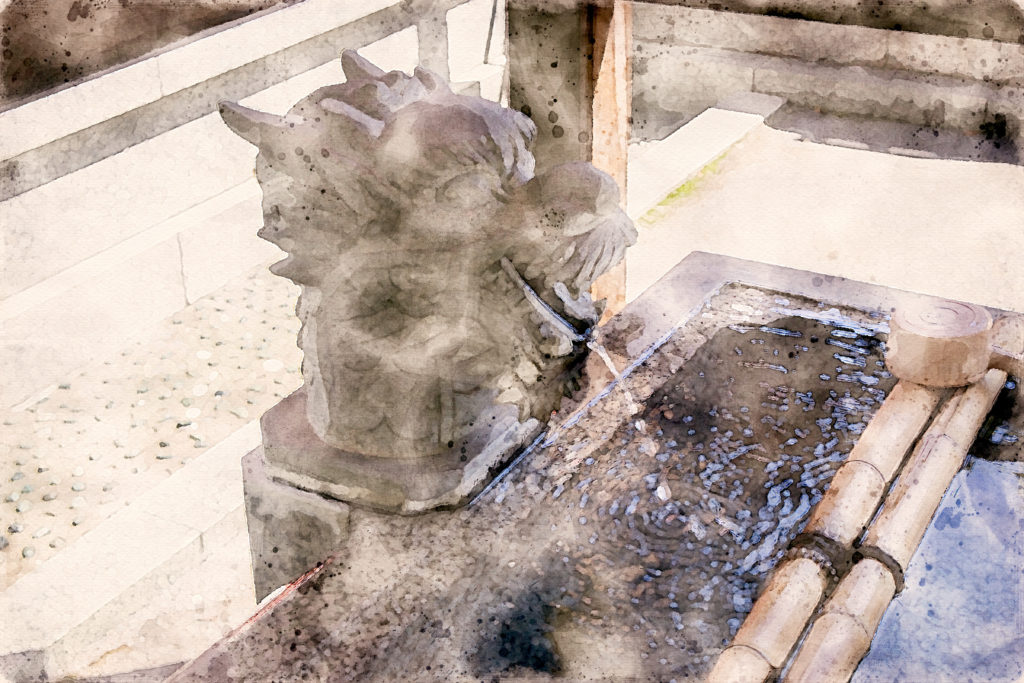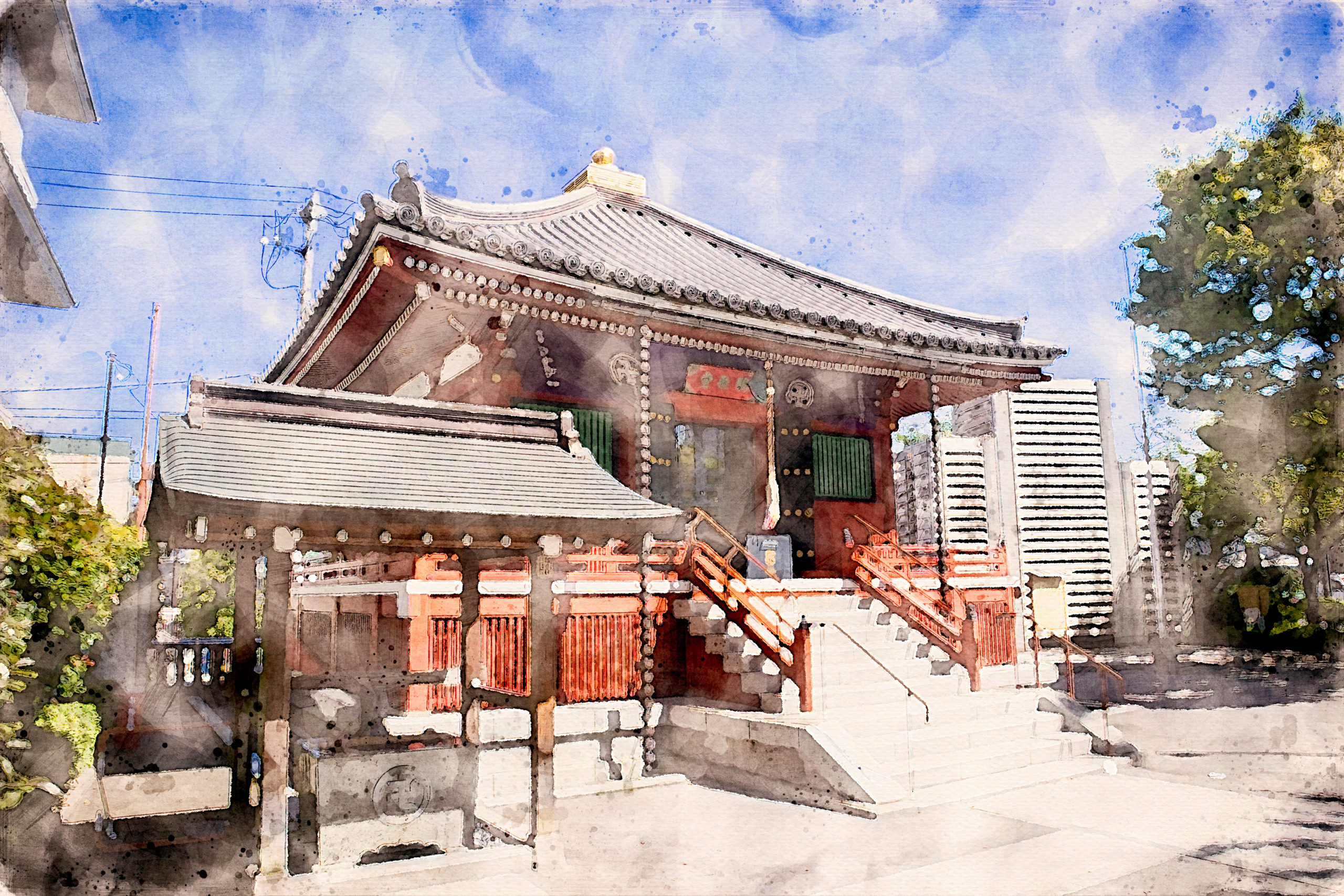Tokyo Shitamachi Guide’s “Highlights” category covers must-visit spots in Tokyo’s Shitamachi area (the area along and east of the Sumida River). We select an interesting spot each time for your sightseeing in Tokyo.
This time, our recommended spot is Komagata-Do Hall at Sensoji Temple in Taito Ward.
Komagata-Do Hall is Butsudo (a Buddhist hall) near the Komagata-Bashi Bridge. Butsudo is a facility that enshrines one or more Buddha statues for worship and memorial services.
Komagata-Do Hall enshrines Bato-Kannon Bosatsu (the Horse-Headed Kannon Bosatsu). Her major divine virtues are animal protection (especially for horses), travel safety, good health, and others.
Senoji Temple considers the precincts of Komagata-Do Hall to be the birthplace of the temple. The origin of Sensoji Temple is that two fisherman brothers found a statue of Sho-Kannon Bosatsu in the Sumida River. According to the temple, it was near Komagata-Do Hall.
This blog post will share information about Komagata-Do Hall at Sensoji Temple. Please use it as a reference when you visit Tokyo’s Shitamachi area, especially the Asakusa area, for sightseeing.
We hope this blog post will help you somewhat when you visit Tokyo for sightseeing. If you have any questions, feel free to contact us through the contact form.
This blog post is also available in Japanese. You can refer to it at the following link:
Bato-Kannon Bosatsu, Who Is It?
Komagata-Do Hall enshrines Bato-Kannon Bosatsu (the Horse-Headed Kannon Bosatsu). Her major divine virtues are animal protection (especially for horses), travel safety, good health, and others.
Bato-Kannon Bosatsu is one of the transformed forms of Kannon Bosatsu. Kannon Bosatsu, the Goddess of Compassion, changes into various forms to listen to the sufferings and wishes of many people.
There are several types of Bato-Kannon Bosatsu. One at Komagata-Do Hall has the following features:
- three faces and six arms;
- angry expressions;
- a horsehead on her crown.
There are two major reasons why Bato-Kannon Bosatsu is angry. First, it is to crush people’s anguish and evil with her rage. Second, it is to eat up people’s earthly desires like horses eat grass.
Some say that Jikaku-Daishi Ennin carved the statue of Bato-Kannon Bosatsu at Komagata-Do Hall. According to the Sensoji Temple, he took the major roles for the temple’s revival in the 9th century.
Jikaku-Daishi Ennin is related to many other Shinto shrines and Buddhist temples besides Sensoji Temple. For example, Ushijima Shrine near Sensoji Temple is one of them.
Jikaku-Daishi Ennin is said to have built Ushijima Shrine after receiving an oracle from Susanoo. For more details about Ushijima Shrine, please refer to the following blog post:
Bato-Kannon Bosatsu, Where Is It?

Komagata-Do Hall is located near the Komagata-Bashi Bridge over the Sumida River. It’s about a 5-minute walk from Sensoji Temple’s Kaminarimon Gate.
Senoji Temple considers the precincts of Komagata-Do Hall to be the birthplace of the temple. The origin of Sensoji Temple is that two fisherman brothers found a statue of Sho-Kannon Bosatsu in the Sumida River. According to the temple, it was near Komagata-Do Hall.
There was a boat dock right in front of Komagata-Do Hall during the Edo period. People who landed here visited Komagata-Do Hall before heading to Senoji Temple.
In addition, there were stables near Komagata-Do Hall for horses carrying rice from Asakusa Okura, the largest rice storehouse that existed by the Sumida River during the Edo period. This may be related to the fact that Komagata-Do Hall enshrines Bato-Kannon Bosatsu.
For more details about Asakusa Okura, please refer to the following blog post:
History of Komagata-Do Hall

According to Sensoji Temple, the history of Hozomon Gate dates back to the 10th century. And its history is related to a military commander who played an active role in the Taira no Masakado Rebellion.
In 935, the Taira no Masakado Rebellion broke out. Taira no Masakado, a local ruling family in the Kanto region, rebelled against the central government in Kyoto. He tried to establish an independent nation by occupying most of the Kanto region.
In 940, the central government in Kyoto suppressed the rebellion. And Taira no Kimimasa was one of the military commanders who contributed to the suppression. He was a cousin of Taira no Masakado.
In the same year, Taira no Kimimasa was appointed the chief governor of the Awa-no-Kuni Province for his contributions. The Awa-no-Kuni Province is the southern part of present-day Chiba Prefecture.
But Taira no Kimimasa was not happy with it. He wanted to become the chief governor of the Musashi-no-Kuni Providence, which is present-day Tokyo, Saitama Prefecture, and part of Kanagawa Prefecture.
In 941, Taira no Kimimasa prayed for his promotion at Sensoji Temple. In 942, he successfully became the chief governor of the Musashi-no-Kuni Providence. So he thanked Sensoji Temple very much.
At that time, Sensoji Temple was in ruins due to the Taira no Masakado Rebellion. Taira no Kmimasa devoted his efforts to rebuilding the temple.
In 942, Taira no Kimimasa built a Buddhist hall at the present location of Komagata-Do Hall. Sensoji Temple enshrined Bato-Kannon Bosatsu in this hall. This is the beginning of Komagata-Do Hall.
Like other buildings at Sensoji Temple, Komagata-Do Hall has been burned down and rebuilt several times. The current building was built in 2003.









